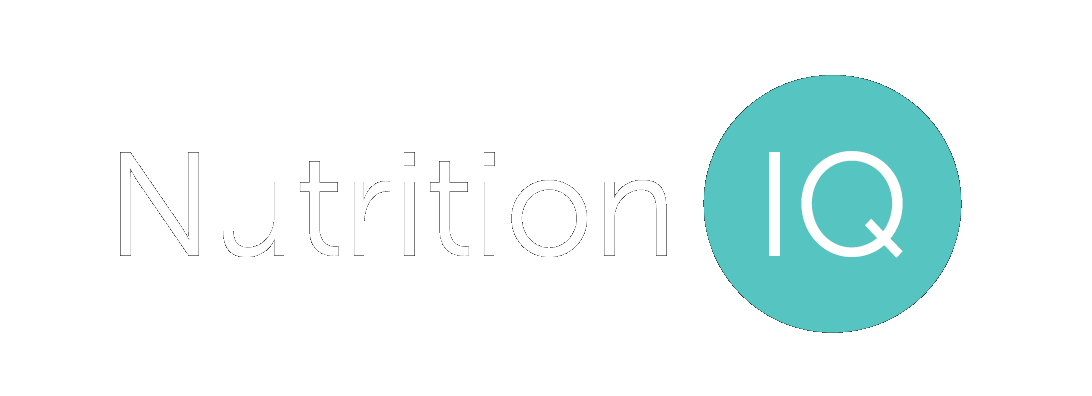What is Joyful Movement?
June 13, 2023

In a world where exercise has often been associated with grueling workouts, strict regimens, and a relentless pursuit of physical perfection, joyful movement encourages us to shift our focus from rigid exercise routines to a more intuitive, flexible, and enjoyable approach to staying active throughout all stages of life. It embraces the idea that movement should be a source of pleasure, nourishment, and self-expression rather than a means to an end. It emphasizes that we should be able to take breaks and rest when we need to and not get hung up on rigid schedules or forcing ourselves to move in ways that we don't enjoy. But what actually is joyful movement and what if you don't feel joy when moving your body? Let's explore...
What is Joyful Movement?
I posted this definition of Joyful Movement on my Instagram account this week.
In my practice, joyful movement is an extension of Intuitive Eating. Similar to Intuitive Eating, where we tune into our body's innate wisdom and honour its unique needs when it comes to food, joyful movement does the same thing with exercise. It encourages us to let go of rigid rules and external expectations of what movement is "supposed to" look like, and instead prioritizes our individual preferences, sensations, and desires when it comes to physical activity.
Exercise is often seen as a way that we can shrink our bodies or punish ourselves for eating too much food. However, if we feel like we are working hard but aren't seeing the "results" we're expecting, or aren't seeing "results" as fast as we are expecting, then we often stop exercising altogether. This all-or-nothing mindset really hurts our ability to exercise and get enjoyment out of moving our bodies purely for the sake of movement. In addition to this, if we have a very rigid definition of what exercise is supposed to look and feel like, it's easy to let it fall by the wayside if we aren't meeting that expectation. For example, if you feel like you need to go to the gym 5 days each week for 60 minutes, but something comes up and you miss a few workouts, it's easy to think that the whole week is shot and rather than going to the gym when you can, you tell yourself you'll just try again next week.
Joyful movement is about developing a positive relationship with our bodies, embracing movement as a form of self-care, and celebrating what our bodies are able to accomplish, rather than fixating on specific outcomes. It allows for flexibility and emphasizes that often some movement is better than none, even if that movement falls outside of what we normally think "counts" as exercise.
Shifting from "Should" to "Want"
A key aspect of joyful movement is shifting our mindset from "should" to "want." Rather than forcing ourselves to engage in certain activities out of obligation or societal pressure, we are encouraged to explore movement that we enjoy and actually want to do. This could involve anything from dancing, hiking, swimming, practicing yoga, gardening, or even playing with your kids. The possibilities are endless. The goal is to find activities that genuinely bring us joy and make us feel alive.
The Benefits of Joyful Movement
Improved Physical Health
Engaging in joyful movement on a regular basis can lead to numerous physical health benefits. It can improve cardiovascular health, enhance flexibility and strength, improve stamina, create stronger muscles and bones, and even improve sleep. I read something recently that talked about using movement as a way to create your "old lady body" and that really resonated with me. So much of what we think of as exercise is about short-term gains when really we need to be considering the long-term impact. If we push ourselves too hard and forget to rest, we can end up injuring ourselves. If we don't eat enough to support our exercise, we can reduce muscle mass rather than increase it. If we consistently push ourselves to do exercise that we hate, we will eventually stop doing it. We need to start considering the long game. By approaching movement from a place of joy and pleasure, we are more likely to engage in consistent and sustainable physical activity, leading to long-term health improvements well into old age.
Enhanced Emotional Well-being
Joyful movement has a profound impact on our emotional well-being. When we engage in activities that bring us joy, our bodies release endorphins, serotonin, and dopamine—neurochemicals that uplift our mood, reduce stress, and increase feelings of happiness. Additionally, joyful movement promotes body acceptance, self-compassion, and a positive body image, fostering a healthier relationship with ourselves and our bodies. When was the last time that you celebrated what your body could do? When was the last time that you gave your body some gratitude for allowing you to move through the world? If the answer is never, maybe it's time to start. Joyful movement doesn't have to mean yoga and walking, it can be goal-oriented, it can be challenging, but it should also be a celebration of what your body can accomplish.
Empowerment and Self-Expression
By embracing joyful movement, we reclaim our autonomy and empower ourselves to move in ways that align with our true selves. It becomes a form of self-expression, enabling us to connect with our innermost desires, break free from societal expectations, and cultivate a sense of authenticity. Joyful movement allows us to do what we want to do because we want to do it, not because someone told us that we should. It becomes a celebration of our unique bodies and will shift and change in order to honor our personal journey. Movement that felt good to you a year ago may no longer feel good now, and that's ok. We're allowed to change over time.
What does Joyful Movement Look Like?
The better question here is what doesn't joyful movement look like? Joyful movement can be anything you want it to be provided that you enjoy it and that it allows you enough flexibility to also enjoy the rest of your life. We weren't put on this earth just to exercise. I often encourage clients to move their bodies in ways that they have never tried before. Experimenting may allow you to find unexpected joy in movement. Some examples of ways that you could move your body include:
- Walking
- Running
- Dancing
- Team Sports
- Kayaking
- Swimming
- Hiking
- Gymnastics
- Gardening
- Housework
- Playing with your kids
- Active video games
- Yoga
- Cycling
- Rollerblading
- Strength training
Anything goes as long as you are enjoying it. Always remember that doing something that's fun is more likely to encourage you to keep doing compared to pushing yourself to do something that you hate.
A few other tips to get you going on your joyful movement journey:
- Don't be afraid to add things to the above list to make them more enjoyable. Hate walking by yourself? Can you ask a friend to walk with you or tune into a great podcast or audiobook while you walk?
- Rather than as a separate task on an already long to-do list, consider adding movement into your daily routine like running errands on foot or biking to work so that the movement gets accomplished over the course of the day.
- It's ok to schedule in movement if that makes it easier to get it in. Sometimes people benefit from a fitness class or a sport that has a set time every week so they can plan their schedule around that.
- Involve the family. If you're a busy parent, it can be hard to schedule time for movement just for yourself. Instead, can you involve the family? Can you move together in ways that are fun for everyone?
If movement keeps getting pushed down the priority list every day, ask yourself why? Do you need to take a break for a bit and come back to it later? Do you need to experiment some more and find something else that brings you joy? Don't be afraid to pause and reflect.
What if Movement Doesn't Feel Joyful?
But what if movement doesn't feel joyful? What if you're not excited to move your body every day? Is there something wrong?
Absolutely not! Joyful movement is maybe a bit misleading as a term. We want there to be joy but that doesn't mean that it will always feel easy or that you'll always be really excited to move your body every day. Sometimes the joy comes afterwards. You may not be excited to move at first, but you know that you'll feel really good and have a real sense of accomplishment from moving your body once it's over.
Thinking about how you'll feel at the end may be enough of a boost to get you started even when the getting started doesn't feel joyful. If you're still not feeling anything at the end, maybe that's a sign that you need to switch things up. Don't be afraid to experiment and find something that does spark some joy or a sense of accomplishment.
Avoiding the Weight Loss Trap
The association between exercise and the expectation of weight loss is strong in our society. If you're wondering how to start moving joyfully without focusing on weight loss or shrinking your body, keep reading.
When we start working towards leaving diet culture behind, some people need to take a long break from exercise in order to break that association. While it seems scary to take a break from exercise (especially since we're always told that we "should" be moving), it's perfectly fine to take a break. Life is long and in the grand scheme of things, a break from exercise won't matter that much. Some people may also benefit from radically changing and expanding their definition of exercise. Ask yourself: can you move beyond the gym? What feels fun to you? Are there things you've always wanted to do but diet culture told you it didn't "count"?
It's important to remember all the benefits of moving that we already discussed above and really consider your "why". Why do you want to move your body? What are your goals? Is there room for flexibility and rest? Are there different types of movement that will allow you to reach your goals without feeling stuck with only one "right" way?
While ideally body changes should not be the main driver of the behaviour, give yourself some compassion if the desire to change your body is still present. We don't live in a diet-culture-free vacuum. One really important question to ask yourself: Is this something that I would do even if it meant my body would not change whatsoever?
If the answer is yes, go for it.
The Bottom Line
Joyful movement is a paradigm shift in how we approach physical activity. By prioritizing pleasure, self-expression, flexibility and intuition, it offers a refreshing alternative to rigid exercise routines. Embracing joyful movement allows us to cultivate a positive relationship with our bodies, nurture our well-being, and experience movement as a joyful and fulfilling journey. It's time to leave rigid exercise in the past and embark on a path of self-discovery, embracing movement that brings joy, and celebrate what your body can accomplish.
Leave a comment
Comments will be approved before showing up.
Also in Nutrition News

The Ultimate Guide to Stress-Free, Delicious Gluten-Free Holiday Hosting
November 19, 2025
If you are planning on hosting for the holidays and have a gluten-free guest, here are some of my top tips to create a safe and stress-free holiday meal.

Starbucks and Tim Hortons are selling high-protein lattes: Do you need them?
September 17, 2025
Starbucks and Tim Hortons are jumping on the high-protein trend, but do you need a high-protein coffee?

Bone Health in Women After 40: How to Keep Your Bones Strong for Life
April 11, 2025
Wondering how to keep your bones strong as you age? This blog breaks down how menopause, nutrition, and even weight loss medications like Ozempic impact your bone health—and what you can do to protect it.
+Recent Articles
-
The Ultimate Guide to Stress-Free, Delicious Gluten-Free Holiday Hosting
November 19, 2025
-
Starbucks and Tim Hortons are selling high-protein lattes: Do you need them?
September 17, 2025
-
Bone Health in Women After 40: How to Keep Your Bones Strong for Life
April 11, 2025
-
Don't Make These Four Mistakes Planning your New Year's Resolutions
December 16, 2024
-
The #1 Eating Mistake You May Be Making Over the Holidays
December 11, 2024
-
A Holistic Approach: Managing Endometriosis Symptoms through Nutrition and Lifestyle
November 27, 2024
-
Nourish to Flourish: Nutrition and Lifestyle Strategies for Managing PCOS
September 30, 2024
-
Thriving Through Perimenopause: Simple Nutrition and Lifestyle Changes for Symptom Relief
July 22, 2024
-
Beat Period Symptoms: Nutrition and Lifestyles Hacks for a Better Period
July 08, 2024
-
Sun, Sand, & Self-Esteem: Navigating Body Image in the Summer
June 21, 2024
Sign up to get nutrition tips and tricks directly to your Inbox, as well as the latest on any promotions, webinars, or services being offered by Nutrition IQ.
© 2026 Nutrition IQ.



